A photographic history of freedom
- Published
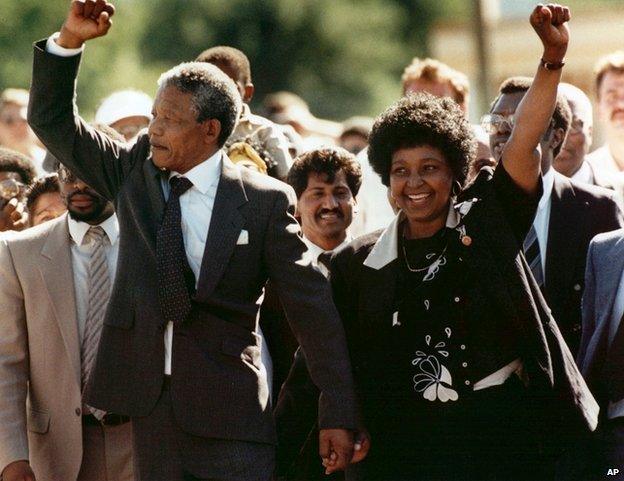
The BBC's freedom season asks what the word means in the modern world. From getting out of jail to freedom of expression, here are 10 images of key moments, starting with Nelson Mandela on the 24th anniversary of his release.
1. Mandela leaves prison. Fist in the air and holding hands with his wife Winnie, Nelson Mandela hadn't been photographed for 27 years, until he emerged from Victor Verster prison near Cape Town. Associated Press photographer Greg English, who took the image above, recalls the scrum for the perfect picture.
"It turned into a complete nightmare for us photographers, because we were corralled into standing in a particular place while crowds were running everywhere, blocking our shots. Suddenly, I had a clear view and I shot around six frames," he told Amateur Photographer magazine, external.
"Initially, the picture was wired with the hands cropped out, but I felt that showing them holding hands was a big part of the story." It was sent out again with the hands visible.

2. The Arab Spring. Decades of autocracy came to an end in Tunisia when President Zine al-Abidine Ben Ali fled the country after 23 years in power.
This picture shows crowds gathering in front of the interior ministry in Tunis after the president's address to the nation on 14 January 2011. Ben Ali ordered police to stop firing on protesters and said he would not seek another term in office. He flew out of the country with his wife and children later that day.
Thousands took to the streets to celebrate. Nine months later, the country held its first democratic parliamentary elections.

3. Concentration camps freed. Dachau, near Munich, was the first camp to be built by the Nazis. An estimated 30,000 people died there in the 12 years before it was liberated by US soldiers on 29 April 1945.
This photograph taken by Horace "Tubby" Abrahams, who had been travelling with the US Army throughout the war, shows some of the younger prisoners cheering their liberators.

4. Freedom to study. On 9 October 2012, gunmen shot and wounded Malala Yousafzai. She had spoken up for the right of girls to be educated, her punishment was a bullet to the head.
However, the Taliban's attempt to silence her had the opposite effect. Malala has given a live address from UN headquarters, chatted with prime ministers and presidents, and has written a book about her experiences.
Pictured here at Birmingham's Queen Elizabeth Hospital, where she received treatment, she continues her campaign for a girl's right to go to school.
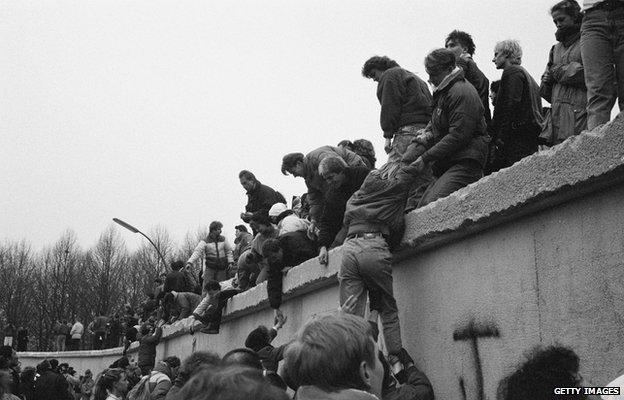
5. Climbing the Wall. In November 1989, the Berlin Wall was breached after nearly three decades dividing East and West Berliners.
Taken by Getty photographer Steven Eason in East Berlin, this image shows people exercising their freedom to climb the wall - and to jump down on the other side if they felt like it.
"I chose the East side simply because so many photographers were on the West side, flashguns blazing," says Eason. "It was a more interesting point of view."
Eason says he didn't want to stand out as a press photographer, so he used a small Olympus 35RD.
"The people on the East seemed politely excited and at the same time apprehensive. The border guards were helping fellow East Germans on to the wall for a view of the mass of Western press photographers. I think the feeling was - it was good to see the old bureaucracy made useless, but what would replace them?"
He adds: "I finished snapping away at the wall and turned round to see two small boys jumping on top of a police car. The East German officers inside looked really put out. I didn't take a picture - a grown-up may get arrested, I thought - and I headed back to the hotel for schnapps."
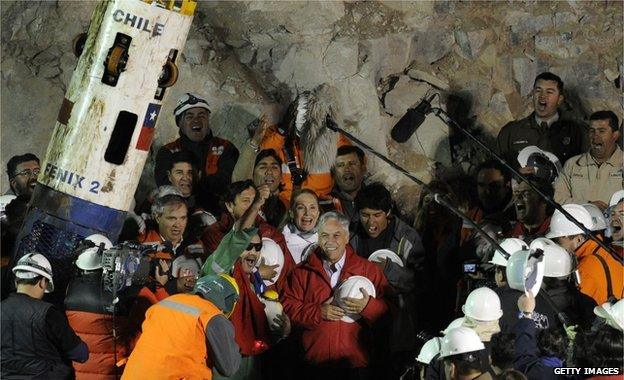
6. The Chilean miners. Trapped more than half a mile underground for 69 days, the rescue of the 33 miners was watched on television by more than a billion people.
Thanks to raw emotions, strong characters and a happy ending, their journeys up to the surface in the Fenix 2 capsule became symbolic of hope, freedom and family.
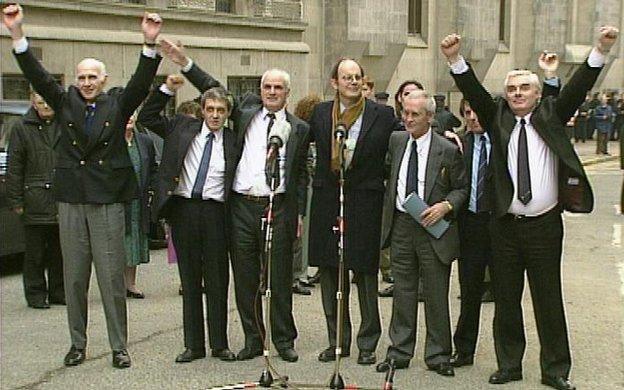
7. The Birmingham Six. Paddy Hill, Hugh Callaghan, Richard McIlkenny, Gerry Hunter, Billy Power and Johnny Walker served more than 96 years between them for a crime they did not commit.
They were wrongly accused of planting two IRA bombs that killed 21 people at two Birmingham pubs, The Mulberry Bush and the Tavern, in 1974.
They celebrated their first taste of freedom outside the Old Bailey on 14 March 1991, alongside Labour MP Chris Mullin, who had led the long campaign to prove their innocence.
McIlkenny was first to speak. "It's good to see you all," he said. "We've waited a long time for this - 16 years because of hypocrisy and brutality. But every dog has its day and we're going to have ours."
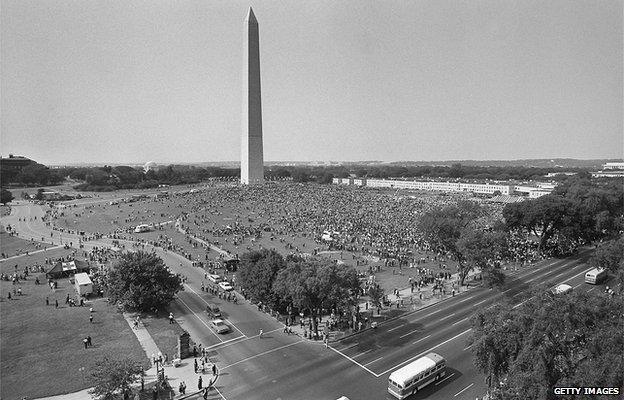
8. Jobs and freedom. An estimated 250,000 people turned out for the march on Washington, in August 1963. Organised by a number of civil rights groups, the crowds walked from Washington Monument to the Lincoln Memorial where Martin Luther King delivered his historic "I have a dream" speech.
They marched in the name of jobs and freedom, and against the inequalities suffered by black Americans.
Violence had been feared, and the police presence was heavy, but the march passed peacefully.
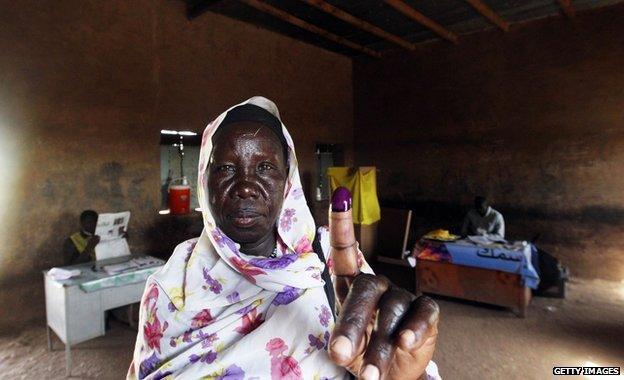
9. A new country. In the grip of violent conflict and with an estimated 3.7 million people in need of food, South Sudan's freedom has turned sour, three years after it voted for independence from Sudan.
After Africa's longest-running civil war, it became the continent's first new country since Eritrea split from Ethiopia in 1993.
"There was a general feeling of hope for freedom and a better life," says AFP photographer Khaled Desouki, who took this image. "It was a quiet day and voters came to the polling stations to vote easily. They were very excited and full of hope for the future. As for the woman, I didn't talk to her, but happiness was obvious on her face."

10. Lady Chatterley's Lover. In November 1960, Lady Chatterley's Lover sold out. Penguin had printed 200,000 copies, and bookshops reported selling out, external within minutes, Considered sexually explicit, D H Lawrence's novel had already been published in Italy and in France, but it had been banned in the UK.
Penguin won the right to publish the book in its entirety after a six-day trial at the Old Bailey.
In an article in The Guardian, external, Geoffrey Robertson QC said the verdict was "a crucial step towards the freedom of the written word".
Follow @BBCNewsMagazine, external on Twitter and on Facebook, external